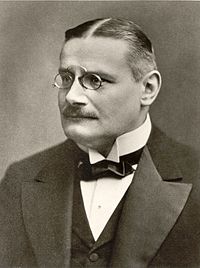Albert von Le Coq
Von Le Coq was heir to a sizable fortune derived from breweries and wineries scattered throughout Central and Eastern Europe, thus allowing him the luxury of travel and study at his leisure.Serving as assistant to the head of the museum, Professor Albert Grünwedel, Le Coq helped plan and organize expeditions into the regions of western Asia, specifically areas near the Silk Road such as Gaochang.Le Coq said that the depictions of figures with apparently blue eyes, red hair and cruciform swords resembled Frankish art: "Such more striking are representations of red-haired, blue-eyed men with faces of a pronounced European type."[citation needed] With the help of Theodor Bartus and his other assistants, Le Coq carved and sawed away over 360 kilograms (or 305 cases) of artifacts, wall-carvings, and precious icons, which were subsequently shipped to the museum.In Buried Treasures ..., Le Coq defends these "borrowings" as a matter of necessity, citing the turbulent nature of Chinese Turkestan at the time of the expeditions.

BerlinPrussiaWeimar RepublicbreweryarchaeologyHuguenotCentralEastern EuropeA. Le CoqEstoniaGerman Turfan expeditionsBezeklik CavesarchaeologistexplorerCentral AsiaBuddhist monksBezeklik Thousand Buddha CavesTurpanXinjiangblue-eyedred-hairedTocharianCaucasian figuresTang ChineseUyghur rulePersian peopleCaucasiandonkeyBactrian camelSogdiansEastern Iranian peopleTurfanAncient GreeceHermann ParzingerPrussian State ArchiveWilhelm IIGerman gold marksEthnological Museum of BerlinAlbert GrünwedelSilk RoadGaochangBuddhistManichaeanNorthwest ChinaFranksTheodor BartusElgin MarblesKoh-i-NoorWorld War IIBerlin ZooDahlemMuseum of Indian ArtBerlin-Brandenburg Academy of Sciences and HumanitiesDeutsche Akademie der WissenschaftenMainzer Akademie der Wissenschaften und LiteraturGermanprepositionnobilitySchillerClausewitzGoetheFinlandShanghai StarPeter HopkirkTurkestanHopkirk, Peter